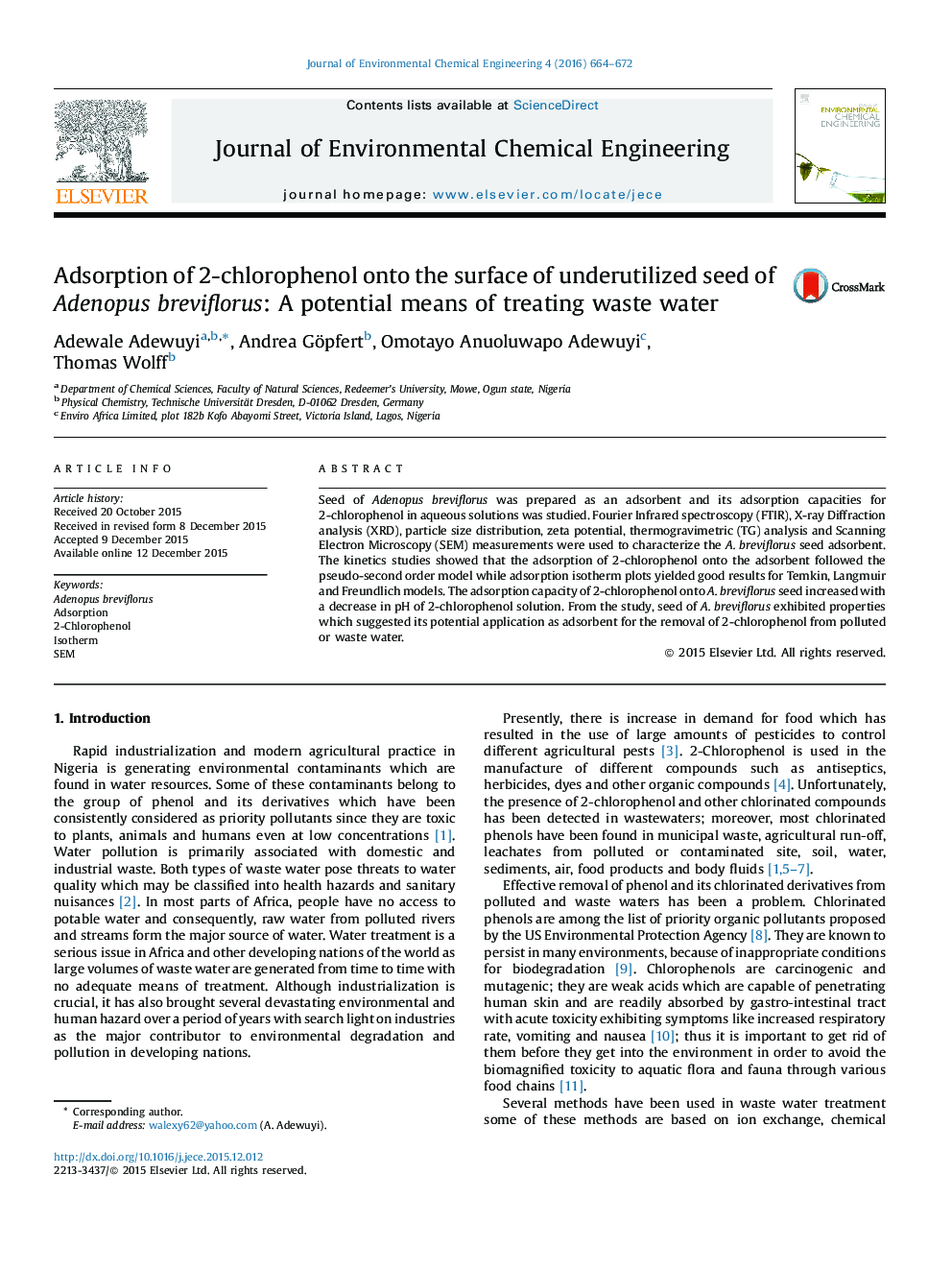| Article ID | Journal | Published Year | Pages | File Type |
|---|---|---|---|---|
| 221922 | Journal of Environmental Chemical Engineering | 2016 | 9 Pages |
Seed of Adenopus breviflorus was prepared as an adsorbent and its adsorption capacities for 2-chlorophenol in aqueous solutions was studied. Fourier Infrared spectroscopy (FTIR), X-ray Diffraction analysis (XRD), particle size distribution, zeta potential, thermogravimetric (TG) analysis and Scanning Electron Microscopy (SEM) measurements were used to characterize the A. breviflorus seed adsorbent. The kinetics studies showed that the adsorption of 2-chlorophenol onto the adsorbent followed the pseudo-second order model while adsorption isotherm plots yielded good results for Temkin, Langmuir and Freundlich models. The adsorption capacity of 2-chlorophenol onto A. breviflorus seed increased with a decrease in pH of 2-chlorophenol solution. From the study, seed of A. breviflorus exhibited properties which suggested its potential application as adsorbent for the removal of 2-chlorophenol from polluted or waste water.
